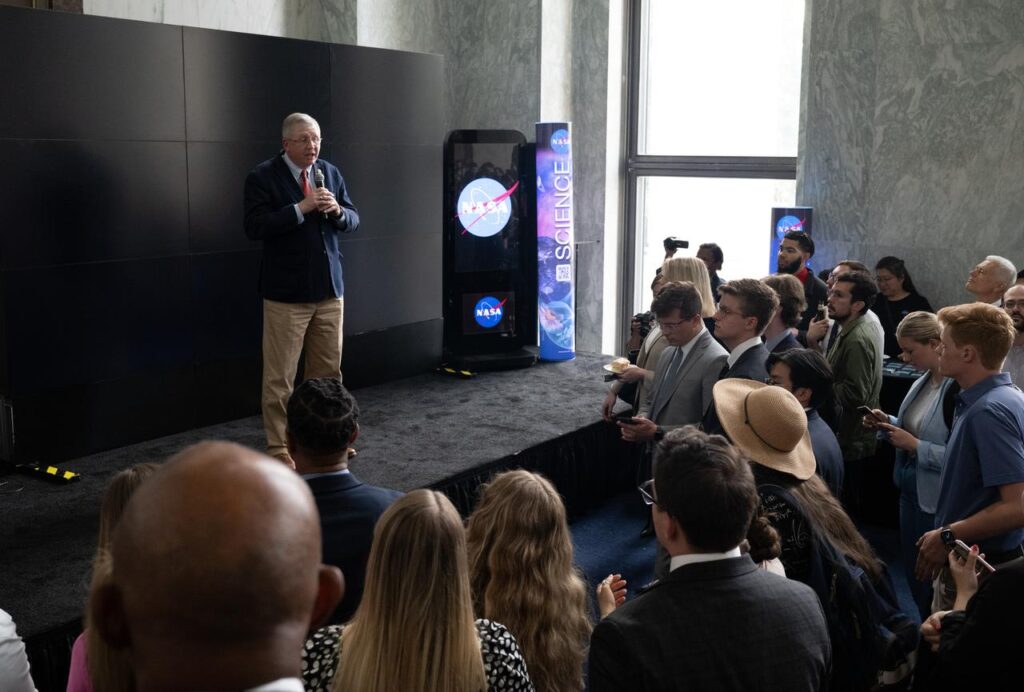
NASA and officials from the U.S. Congress are currently trying to understand the impact of a recent agreement on the debt ceiling. This agreement includes spending limits and suggests that NASA may receive less funding than it originally requested for 2024.
The Fiscal Responsibility Act of 2023, signed into law by President Biden on June 3, suspends the debt ceiling until the end of 2024. This allows the government to continue borrowing money and prevents a financial crisis. As part of the agreement, the bill sets a cap on non-defense discretionary spending for the fiscal year 2024, keeping it at 2023 levels. The cap will then increase by 1% for 2025.
However, the specific effect of these new spending limits on individual agencies is still uncertain. The cap doesn’t apply equally across the board. Appropriators will receive allocations for each of the 12 spending bills, including the one that covers NASA, and then they’ll decide how to distribute the funding among different agencies and departments.
NASA had requested $27.185 billion in its budget proposal for 2024, which was a 7% increase compared to its funding in 2023. Unfortunately, it’s now unlikely that the agency will receive the full increase due to the new spending limits.
Pam Melroy, NASA’s deputy administrator, acknowledged the reality of the debt ceiling agreement during a joint meeting on June 7. She recognized that it’s unlikely NASA will get the full amount they requested, which will create challenges for the agency. Although she didn’t go into detail about the specific challenges resulting from reduced spending, she mentioned that NASA will have to make difficult decisions this year.
Even before the budget constraints, NASA had to make tough choices in its original budget proposal. For example, they had to delay the start of the Geospace Dynamics Constellation (GDC) mission to accommodate increased costs for the Mars Sample Return mission. Nicola Fox, NASA’s associate administrator for science, defended this decision during a meeting on June 8. She explained that it aligned with the priorities outlined in the most recent heliophysics decadal survey, which emphasized research funding and smaller, competitively selected missions.
Fox emphasized that NASA’s decision to postpone the GDC mission or reduce spending on technology development for the future Habitable Worlds Observatory astrophysics flagship mission wasn’t politically motivated. She pointed out that the budget had both positive and negative aspects, and it was important not to overlook the positive elements.
Ken Bowersox, NASA’s associate administrator for space operations, stated during a meeting on June 8 that it was still too early to determine the specific impact of the budget limits on his directorate, which supports various space programs. He mentioned that the budget, even with the limits, still provided a substantial amount of funding, making it difficult to identify what would be cut at this stage.
The implications of the spending limits are not entirely clear within Congress either. Pamela Whitney, the minority staff director on the House Science Committee’s space subcommittee, expressed uncertainty about what this means for NASA during a meeting on June 7. She noted that individual appropriations bills had not yet been released and expected there to be challenges and stress, particularly regarding budget concerns for science missions.
Image Source: NASA/Joel Kowsky